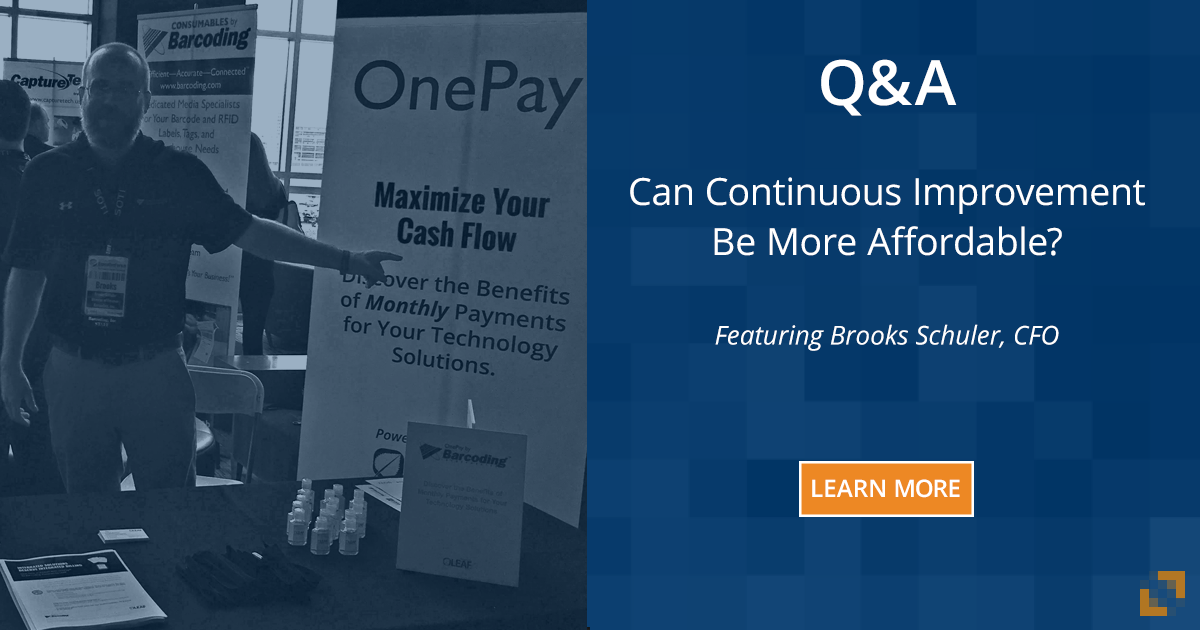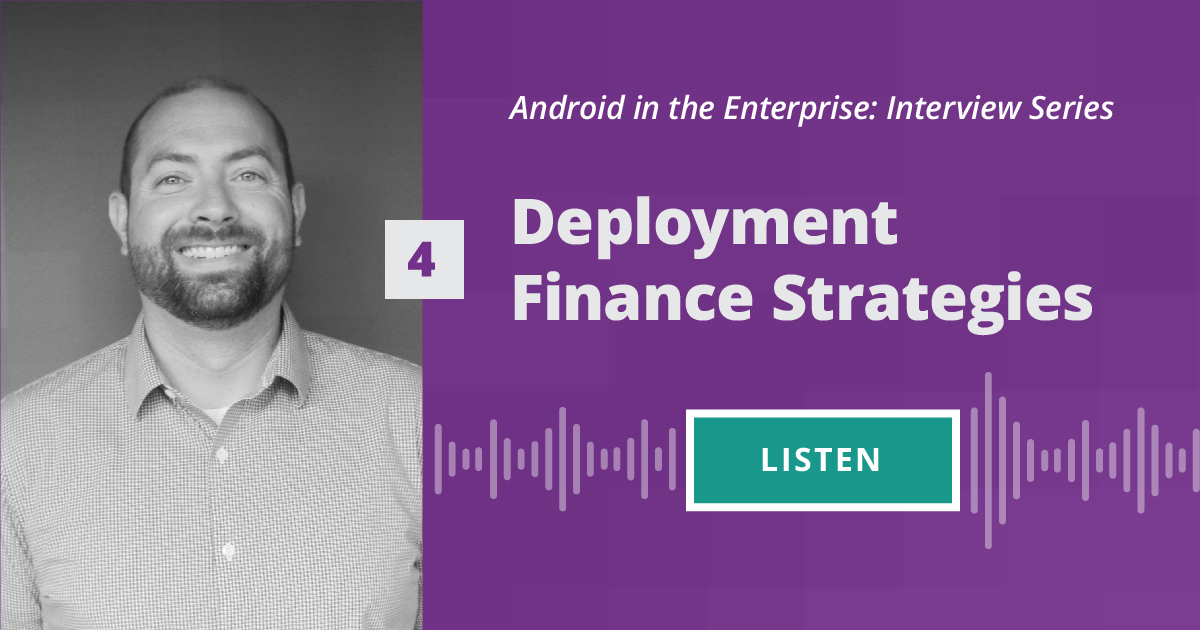Q&A With Brooks Schuler CFO, Barcoding, Inc.
Continuous improvement is iterative: make a change, measure results, and feed what you’ve learned into the next loop. To succeed, it’s critical to continually track products, processes, and progress metrics – an effort which is itself a candidate for continuous improvement, particularly in terms of technology.
Of course, that technology improves rapidly. But a lot of businesses find it hard to keep pace from a financial perspective. And as most technology teams will be quick to tell you, continuous improvement is harder to pull off when the means of measuring progress is a bottleneck that is itself in need of improvement.
Does it have to be this way? We sat down with Brook Schuler, Barcoding, Inc. CFO, to get some thoughts on affordably staying up to date with the technology needed to support successful and sustainable continuous improvement.
In a nutshell, what’s the root of the problem?
The problem as I see it is a mismatch between the nature of the tools you’re acquiring and the means used to acquire them. A technology solution isn’t a fixed set of hardware, software, and services. Any of those pieces can and should change with the needs of your business and the state of the technology involved in any given part of the solution. But too many businesses approach what should be a continually evolving investment in technology with a transactional mindset: buy a solution with cash or a credit line, use it up, buy another one. That approach tends to result in negative cash flow spikes and subsequent lock in while you’re waiting for the solution to “earn out,” neither of which are conducive to sustainable continuous improvement.
What’s the solution?
One of the best solutions to this problem is financing, a smart alternative that’s a far better fit for technology expenditures related to continuous improvement. Rather than paying 100% cash upfront and getting locked into owning a rapidly depreciating technology asset that may soon be outdated, you pay for what you use and update when it makes sense. Consider the need for upgrades, additions, and even large-scale technology course changes driven by the improvement process itself. As your organization changes, its tracking needs change. Financing supports the kind of technology agility you need to meet those needs by making it simple and affordable to alter your solution as required. In fact, our OnePay™ financing makes it as easy as modifying your existing agreement to reflect your updated needs.
Isn’t financing just for hardware? What about the rest of the solution?
Financing doesn’t have to be just for hardware. With the right company, you can put everything that’s part of the solution on the lease agreement, including software, solution design, training, maintenance, services, repair contracts, and so on. You won’t pay upfront for any of it, keeping more of your cash available to grow your business. That’s the approach we use with our OnePay™ financing.
What would you say to someone who would rather own the technology, rather than lease it?
Apart from highlighting the way that buying technology makes keeping up more difficult, I’d ask them to consider asset management. Do they really want to own their technology solution – and own all the issues that come along with it? Take end-of-life assets: with financing, there’s no need to spend time and money trying to recoup any remaining value of your technology on the secondary market. You also avoid stockpiling idle assets with the idea that since you’ve paid for them you may as well keep them around in case someone in the organization can find a use for them someday.
What other thoughts you do have for businesses looking for a sustainable approach to continuous improvement?
Continual improvement isn’t just for organizations. Technology never stands still, and financing gives you a more flexible and affordable way to keep up with hardware and software advances that power your ongoing quest to increase your organization’s competitive edge.
Learn more about OnePay.





